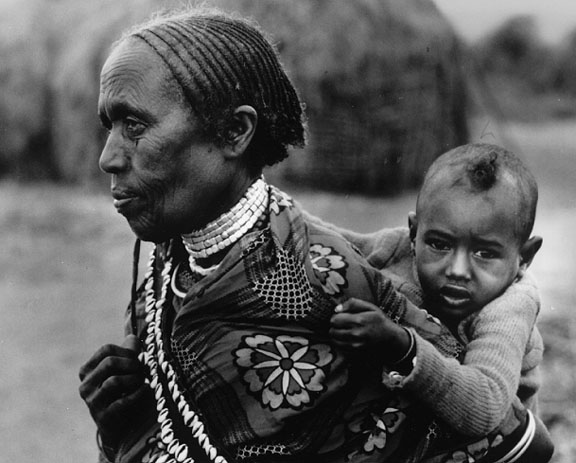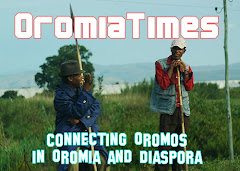By Roseanne Pereira
September 21, 2007
Every square inch seems to have ano
ther fact -- the percentages of the different ethnic groups in
The board is like a map of Abebe's mind. It's overflowing with vital info
rmation about the Oromo and their sometimes violent troubles with the Ethiopian government.
"The regime is following a kind of ethnic apartheid policy, which is very difficult probably to understand in the
we have ethnic divisions."
The Oromo make up 40 percent of
about 7 percent of the country's population.
The conflict between the different ethnic groups in
Human rights reports gathered by the U.S. State Department document such
government-sponsored actions, as do a variety of reports by international human rights organizations. The UN recently called for an independent investigation of human rights abuses i
n
Abebe is currently a research fellow at the University of Minnesota Law School's Human Rights Center. He's also a former Ethiopian diplomat. For years, he worked at the UN advocating for closer ties between
"They charge people with high crimes like genocide, treason, and sometimes terrorism," Abebe says. "Because that word sounds good and feels good for the Western listeners."
From his work at the United Nations and with the Ethiopian government, Abebe believes that the strategy in the Ethiopian government employs is partly a result of the 1994 genocide in
"The TPLF regime, which is a minority regime similar to the Tutsis in
He says that when questioned by Western diplomats, the government uses the threat of genoci
de to excuse its harsh treatment of the Oromo and other ethnic groups in the region.
Michele Garnet Mackenzie directs Minnesota Advocates for Human Rights Refugee and Immigrant program. She has worked with many Ethiopians including the Oromo since the early '90s. She says, though ethnic conflict has been going on for over a hundred years in
"{They're} moving beyond political repression into a much more subtle way to disenfranchise the entire community," says Garnet Mackenzie. "{They're} limiting people's ability to go to
school, not allowing Oromo people to go into secondary school -- to cut the knees off the intellectual class of Oromo living in Ethiopia."
Birhanemeskel Abebe says there are two separate education systems in
"In this way, they are trying to build the exact replica of the apartheid system of South Africa or the separate but equal system once used in the U.S. vis a vis the African-Americans," says Abebe.
"Somebody like me, who traveled two hours, three hours to go to school, who did not have basic necessities when I went to school, only to go to college and get dismissed!"
Orma says nowadays, his mind is split between two countries.
"My day will not be right if I don't wake up and check what happened, if I don't check my e-mail. I have to check the news, I have to see what's happening -- maybe my family might be killed."
Orma says there are few options for Oromo students who remain in
Robsan Itana is the executive director of the Oromo-American Citizens' Council. His office in
In contrast, he says, the reality for the Oromo in
"They're depressed. They feel guilty because most of their family is there, but there is nothing they can do about it. They cannot really live there; they fear for their life, too," says Itana.
Robsan Itana is one of many Oromo trying to raise awareness about human rights abuses in
A study published in the American Journal of Public Health examined the Twin Cities Somali and Oromo refugee populations. It found that 69 percent of Oromo males studied had experienced torture. The psychological and physical pain endured by some of these refugees hinders their ability to raise awareness in a public way.
Many Oromo-Americans are tracking a piece of legislation now going through the U.S. Congress. The bill would encourage respect for human rights and democracy in




















No comments:
Post a Comment